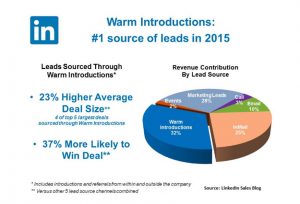For companies that supply physical products, inventory management throughout the supply chain is one of the most important tasks that will largely determine the business’ success or failure. The trick is to always have stock on hand to meet demand, but not have too much capital or storage space taken up with excess inventory.
One solution for inventory management is known as the “push.” It is so named because the retailer essentially plans for customer demand in advance, so therefore it produces and then actively “pushes” this inventory in order to meet the forecasted demand. The other solution is the diametric opposite – the “pull” approach which essentially bases inventory on actual real-time orders.
The Push Approach
Benefits:
- If the forecasting is done correctly, then the company can be relatively certain it will have enough product to meet customer demand. This should prevent “out of stock” scenarios which can severely hurt a brand.
- It can be a part of Material Requirements Planning (MRP), a system that combines operational, financial, and logistical plans that are intended to have materials and funding ready at all times.
And the considerable drawbacks:
- Forecasting is still largely guesswork, even if analytics and past buying behaviors are used. Consumer demand can change quickly (think of the trendy kid’s products from the past few years) and it’s difficult to predict these changes.
- Overestimation of product demand can cause problems from too much stock such as carrying costs, while underestimation can result in the need for rush orders and the accompanying costs.
- Push systems are often more concerned with order processing times, instead of focusing on the customer.
With the push system of inventory management, the negatives typically outweigh the positives, especially for companies that are managing a large number of SKU’s. These companies employ a “one-size-fits-all” model for their products which can often ignore individual product-level spikes or drops in demand. It’s a model that doesn’t take enough account of real-time customer demand. All of the players in supply chains from the product manufacturers, to distributors and on to the actual retailer are discovering the need for inventory control that is mainly influenced by actual purchasing, not simply informed forecasting.
This leads to the “pull” method of inventory management, one where the system starts when a customer places an order, so the company only produces inventory to demand.
The Pull Approach
Disadvantages of the pull:
- Problems in the supply chain can cause the needed shipment of inventory to not arrive on time. Perhaps there is an issue with the supplier who is not able to assemble or ship the order.
- Unexpected spikes in demand can overcome the supply chain’s ability to keep stock on hand.
Advantages of the pull:
- The entire premise of the pull system is that it eliminates the chance for excess of inventory and the carrying costs that go along with it.
- A popular example of pull inventory management is the just-in-time solution, where companies have just enough inventory to match up with demand. It creates a lean environment where stock sizes are more manageable, and opens up space to carry a larger number of SKU’s if desired.
- It’s a more granular approach that is based upon product-level demand, providing a more realistic picture of needs.
Retailers that employ the push inventory system run the risk of having too much or too little inventory of product. This not only incurs costs, but can damage the broader brand. With a cloud-based pull system, there is quicker response time built in, so product is frequently being created and stocked. Greater availability of product can have a net positive effect on the brand, as customers are less likely to be met with “out of stock” notices or see deeply discounted sales (after they bought a week prior) that are needed to clear up the excess inventory. The pull method is a leaner method of operation, one that fits well with other business processes.
Business & Finance Articles on Business 2 Community
(83)





